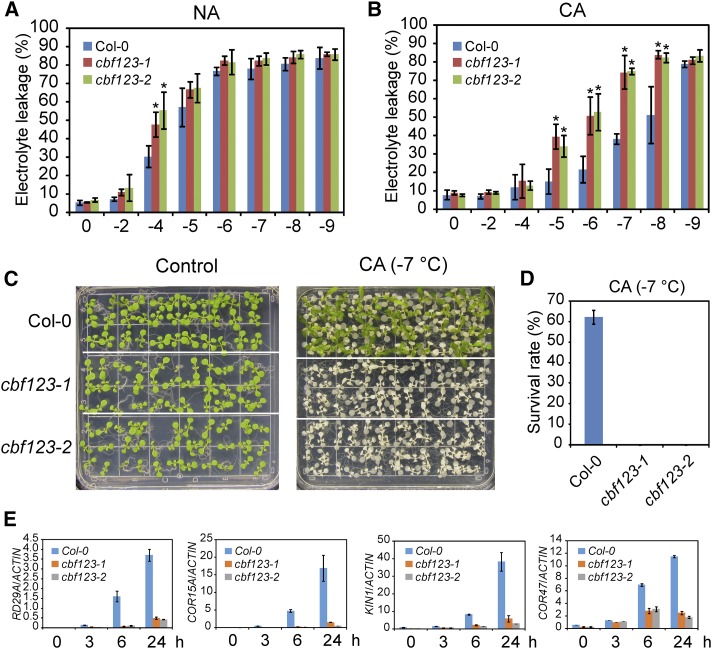Figure 2.
cbf triple mutants are very sensitive to freezing. A, Electrolyte leakage assay conducted on nonacclimated (NA) Col-0, cbf123-1, and cbf123-2 plants grown at 23°C. B, Electrolyte leakage assay performed on Col-0, cbf123-1, and cbf123-2 plants after cold acclimation (CA; 4°C for 7 d). C and D, Freezing survival assay. Col-0, cbf123-1, and cbf123-2 seedlings (48 seedlings for each genotype) were grown on MS medium for 12 d and then transferred to 4°C for cold acclimation. The acclimated plants were subjected to −7°C for 1 h before they were transferred to 23°C for recovery. C shows the phenotype of seedlings before (left) and after (right) freezing treatment. D shows the survival rates of freezing-treated seedlings after 5 d of recovery at 23°C. The above experiments were performed at least three times with similar results, and results from a representative experiment are shown in A to C. Error bars indicate the sd (A and B, n = 3; D, n = 4). Asterisks indicate statistically significant differences (P < 0.05, one-way ANOVA). E, Eight-day-old seedlings of Col-0, cbf123-1, and cbf123-2 were treated at 4°C for 0, 3, 6, and 24 h. Expression of RD29A, COR15A, KIN1, and COR47 was assessed with quantitative real-time RT-PCR. ACTIN8 was used as the internal control. Error bars indicate the sd of three biological replicates.

